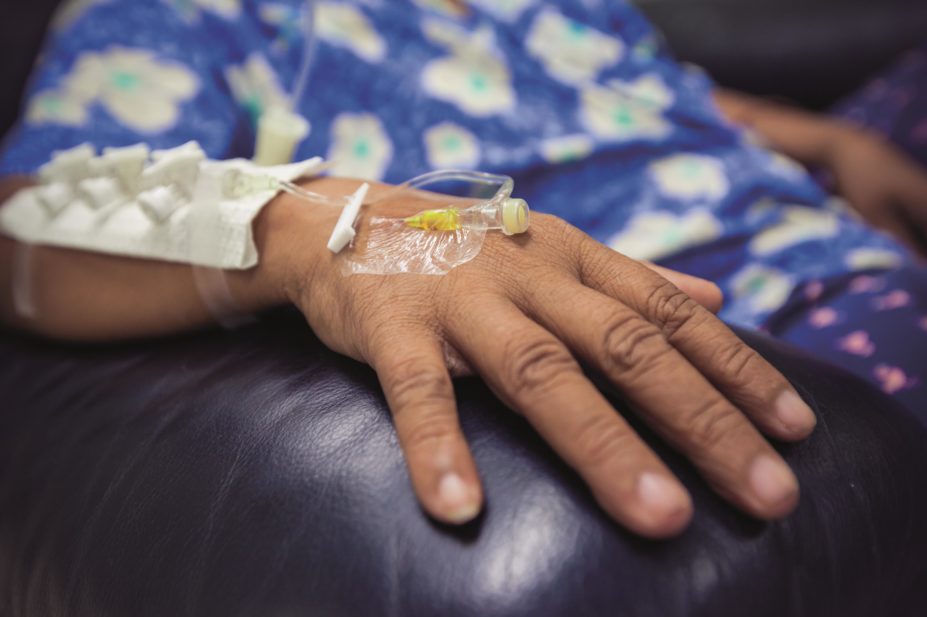
Shutterstock
NHS England has announced plans to implement chemotherapy dose banding nationwide.
Chemotherapy is usually given to patients as an individually calculated dose based on their body surface area or weight. The new banding system means that doses will be grouped into discrete bands that lie within 5–10% of a patient’s calculated dose.
NHS England expects 90% of chemotherapy drugs to be prescribed and administered in this way by 2018, and says the scheme has potential to reduce expenditure on chemotherapy, which totals £1.4bn per year in England.
Dose banding already takes place to some extent in around 90% of NHS trusts in England, but implementation is patchy. NHS England says that rolling out the practice nationwide will result in less drug wastage, quicker turnaround in the clinic for patients and improved safety through a reduced chance of dispensing errors.
“This is an important initiative that will contribute to continuing efforts across the health service to meet the ambitions set out in our cancer strategy to improve outcomes and quality of life for cancer patients,” says Cally Palmer, national cancer director at NHS England.
“By embracing this approach, providers can support patients to receive chemo at appropriate times and in places which are more convenient for them, at the same time as reducing workload for professionals,” she adds.
Carl Booth, lead pharmacist for cancer services and clinical trials at Airedale General Hospital in Steeton, West Yorkshire, says the system should not negatively impact patient outcomes. “Evidence shows that banding chemotherapy doses has no detrimental effect on drug efficacy or tolerability.
“An example is a drug such as carboplatin, where previously an aseptic unit may have had to make up to 20 or 30 different doses,” he adds. “With dose banding, most patients can be banded into just six or seven different doses.”
According to NHS England, a study involving the drug bortezomib carried out at University Hospitals of Leicester NHS Trust found that drug wastage fell from 35% to 15% following implementation of dose banding, equating to a predicted annual cost saving of £325,000. However, it does acknowledge that wastage reductions will vary by drug.
NHS England also sees efficiency being enhanced by trusts clubbing together or jointly outsourcing drug procurement, as drugs can be purchased as “single-serve” doses, rather than needing to be split into individual doses in house.
Booth says the move to dose banding won’t significantly change the way pharmacists work clinically, but the biggest impact will probably be on aseptic units. “Chemotherapy services could choose to dose band drugs but still prepare individual doses in aseptics, however dose banding opens up the possibility for the procurement of pre-prepared doses from external compounding units.”
In the long term, Booth says there is a danger such changes could make some aseptic units redundant. “Pharmacy services will need to manage the introduction of dose banding and purchasing of pre-prepared doses carefully as there may be risks around the long-term viability of aseptic units if a large proportion of doses are procured externally.”


